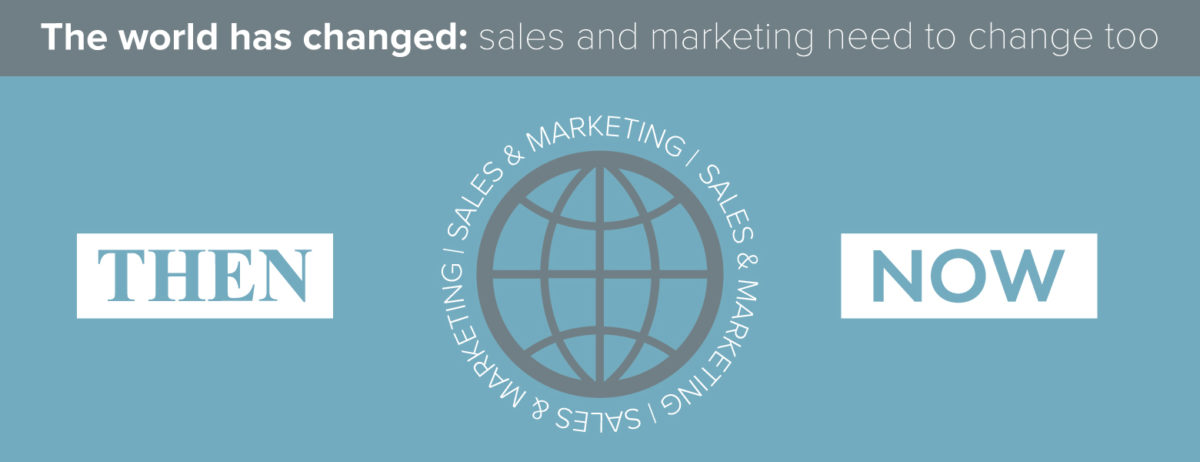It won’t come as any great to surprise to learn that the world in which we live has changed dramatically in recent years, or that it’s continuing to change at an ever faster rate.
Ignoring for a moment the thorny subjects of BREXIT, trade tariffs and globalisation, which tend to be outside my sphere of influence, I’d like instead to draw the attention of all you marketers and sales people out there to the continuing disconnect between the marketing and sales functions in many of our manufacturing and industrial businesses.
In many respects, this tends to be driven by history. For generations, the norm was for sales to control the customer relationship. Initial contact was made through cold-calling, on an exhibition stand or through trade advertising. The prospective customer had a challenge or problem that needed solving and came to suppliers looking for a solution; in the majority of cases, the supplier held all the knowledge and could effectively control the communications and sales process.
Today, all that has changed. Customers have defined their challenges, researched the possible solutions and shortlisted potential suppliers, all without moving from their desks; and, most importantly, without directly contacting a supplier or sales person.
If you consider the journey that each prospect goes on, from point of awareness or need to the point of purchase, as a linear journey (in practice, it’s not, but bear with me); then previously, the prospect might travel 5 to 10% along the journey before contacting a sales person. Today, depending on whose statistics you favour, it can be anything from 50 to 90%.
What now happens in many businesses is that marketing controls the majority of the customer journey, creating an environment where the prospect becomes aware of the company, explores its solutions, downloads white papers or watches videos, and accesses product information before making a contact. At this point, the prospect – by now defined as a lead and already a long way through the customer journey – is handed from marketing to sales. Marketing wipes its collective hands, absolves itself of further responsibility and begins its search for the next ‘hot lead’.
Meanwhile, sales finds itself with a lead that is often barely warm, or a prospect who has already made a decision and is only interested in negotiating the best price.
The result: nobody is happy.
There is a better way; one that reflects the way that most customers – indeed, most of us – buy.
This involves far greater alignment and integration between the marketing and sales functions, with a blurring of the demarcation lines that have traditionally existed between the two.
In practice, both functions need to own the customer journey and relationship, from the outset. Customers come to potential suppliers – however they find them – with questions that they want answered. In the early stages they are looking for information, guidance and insight; it is only once they have started to select possible solutions that they need product data, specification and prices. In this context, an important part of the role of marketing is to ensure that the appropriate information is available at each stage, in a format and location that is accessible by the prospect. Additionally, it is important to position the sales team as the experts that the prospect should be talking to at an early stage of discovery; i.e. experts in the subject, application and technology, who are able to guide the prospect towards the best solution, not simply to negotiate on price. Note that this requires a major shift in sales approach, from transactional to consultative.
Ultimately, this is about relationship building – a skill set that both marketing and sales share. Aligning their activities with the entire customer journey, providing each customer with multiple touch points, will lead to far better engagement, sales and repeat business.
If you’d like to learn more about marketing and sales alignment then please get in touch.



